Celebrating Women from Irish Mythology
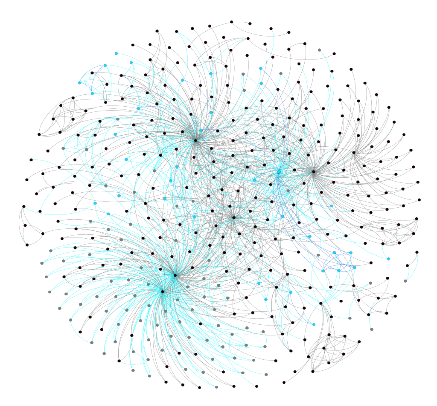
€10,000 in prizes
Including up to €3,000 for schools
(Any form of visual, musical, or literary art)
ÉIRÍ (standing for Évoking Ireland’s Resilient female Ícons) is an international arts competition in parallel with a participatory research project aimed to re-ignite awareness of inspirational female figures from Irish mythology and folklore who have all too often been forgotten, suppressed, or overwritten in the mists of time. Members of the public are invited to submit original art in any form, inspired by any female figure from Ireland’s mythology or folklore. People are also invited to send their own research into women in local or national mythology or folklore whom they feel have been forgotten or underrepresented. The hope is that this project may lead to better representation of women in Ireland’s national iconography and identity documentation.
This competition builds on a recent successful art competition centered on Sinann , the female mythological figure who gave her name to Ireland’s longest river – the Shannon. She was recently overwritten when neo-classical, male iconography was erected to represent the heritage of Ireland’s most central town – Athlone. A male statue was selected despite having no relation to the town and despite the fact that none of the town’s visible secular iconography represents women. That recent competition re-awakened local awareness of Sinann and her inspirational role in early Irish literature – a role that has increased relevance today.
This new competition seeks to raise knowledge and awareness of women in Ireland’s mythology and folklore to a national and international scale. Despite the country taking its name from the female mythological figure Éiru, and despite the majority of Ireland’s population being female, all but one of the 14 figures in modern-day Irish passports are male. These represent the same neo-classical iconography as used in Athlone – iconography that represents commerce instead of culture, profit instead of people, and men instead of parity.
This project arises from a wider interdisciplinary project known as Maths Meets Myths where societies in mythological and folkloristic narratives are researched. Besides submitting their artwork to this competition, the public are also welcomed to contribute the research that underlines it. We invite the public to send us their own research/insights/thoughts into female characters in Irish mythology and folklore. We will collate these submissions with a view to publishing them online or in print (with due acknowledgements if desired). This means that the public have two ways contribute: (a) through artistic representation or (b) through participatory research. Artistic submissions of type (a) will be published online and may lead to a prize of €1,000. Research submissions of type (b) will also be published online and may lead to acknowledgment in an academic publication.
What is the prize? At least seven artists will receive a prize of €1,000 each. We also have up to €3,000 for schools. How we distribute that depends on how many applications we receive.
Who are we? We are four organisations as follows:
- The L4 research collaboration
- Rathcroghan Visitor Centre in County Roscommon.
- Story Archaeology
- The Irish Post newspaper
- Celtic Eye Art Group
Besides these, we will assemble a broad panel of judges from diverse backgrounds.
What is L4? L4 is a research collaboration between the Fluid and Complex Systems Research Centre (FCS) at Coventry University and counterpart groups in Leipzig (Germany), Lorraine (France) and Lviv (Ukraine). This project is run by and financed by FCS. It is led by Professor Ralph Kenna, Director of L4 and Deputy Director of FCS [1].
What is Rathcroghan Visitor Centre? This is a non-profit community social enterprise, located in the medieval village of Tulsk, Co. Roscommon. It is the heritage custodian for the mythologically significant archaeological landscape of Rathcroghan, known in medieval literature as Cruachan Aí. Ireland’s most famous epic, An Táin Bó Cúailnge, begins and ends here. Dr Daniel Curley is Manager and Mike McCarthy is Deputy Manager of the Centre [2].
What is Story Archaeology? From 2012 until 2020 story archaeologists Chris Thompson and Isolde Ó Brolcháin Carmody worked together creating six series of ‘Conversations on Irish Mythology’ combining linguistic expertise in early Irish and wider knowledge of world mythology. The Covid pandemic brought about many changes and Isolde now works in theatre, wheelchair dance and disability politics. Chris continues ‘Conversations on Mythology’ podcasts and leads Story Archaeology to inspire adults and children alike [3].
What is the Irish Post? The Irish Post newspaper has promoted Ireland, its affairs and culture for 50 years. With 3 million visitors online every month it remains the voice of the global Irish diaspora. The Irish Post hosted the Sinann competition from November 2020 to March 2021 with multiple articles and interviews on the themes of the Shannon River and Irish mythology. They are the perfect hosts for this project too – with in-depth articles reaching Ireland, its diaspora, and the wider world [4].
What is Celtic Eye Art Group? Celtic Eye is an art group working with the Karst Farming Group of South Roscommon, Taughmaconnell, Brideswll and Dysart to highlight the importance of Biodiversity in protecting the landscape of this area. Celtic Eye’s mission is to highlight folklore, myths, stories of our land, and biodiversity and to bring people together in a positive way through art, poetry, music, dance and other art forms. Celtic Eye was recently invited to the Seanad Éireann in recognition of their work on highlighting biodiversity & protecting the Irish landscape [11]
When is the deadline for submissions? Samhain – 31 October 2022. This is the date of Ireland’s major pre-Christian festival which gave birth to Halloween. It marks the end of the harvest season and, since we aim to harvest insight into Irish mythology and artistic representations of it, we deem it an appropriate deadline. Samhain is six months after another major festival date – Bealtine. This marks the beginning of summer when the fruit of artistic endeavors begin to blossom.
What has Maths to do with Myths and how did this combination lead to this competition? Maths Meets Myths is a research project started at Coventry University in 2010, funded by the Leverhulme Trust [5]. It applies the mathematics of network science to investigate how characters interact with each other in mythology in much the same way as social scientists investigate how people interact with each other in real life. In 2016 a paper was published [6] investigating one of the most famous literary controversies of all time – an 18th-century text that Irish scholars claimed misappropriated material from Irish mythological sources [7]. Shortly after that controversy, colonial ornamentation in Dublin concocted neo-classical male, iconography to represent Ireland’s rivers, including, e.g., the Shannon and Boyne, both of which are female in Irish mythology. This iconography now in Athlone’s statue and Ireland’s passports. The research paper [6] reignited awareness of the authenticity of Sinann as the Shannon’s mythological river deity [8] and with this project we hope to inspire research and raise awareness of the role of women in Irish mythology and folklore more generally.
What is the image that forms the logo of this project? The image at the top of this document was created by PhD student Maddy Janickyj. It is the social network of characters and interactions between them harvested from Thomas Kinsella’s famous interpretation of An Táin Bó Cúailnge [9]. The dots represent characters, and the curvy lines represent interactions between them. Black dots represent male characters and blue represents female. Blue lines represent interactions in which at least one female is involved. The image gives a feeling for the importance of females in the narrative. Led by Ralph Kenna, an international team including Maddy Janickyj, and other academics is currently developing research which measures the importance of women in Irish and other mythologies.
How can I contribute to the research project and what do I get in return? This is an open-ended research project into the role of women in Irish mythology and folklore. Data harvesting is an enormous task, and we invite the public to contribute in any means they wish. This could be anything from lore pertaining to a witch associated with a local stream, to interpretations of a Sheela na Gig to an account of what a powerful (or not so powerful) female figure in mythology or folklore means to you personally. In many research projects we don’t know the question we are asking until we spot patterns in the data and this project is no different. In other words – we will follow our noses and bring you with us.
How can I contribute to the art project and what do I get in return? We expect at least seven artists will each receive €1,000 and up to €3,000 will be distributed amongst schools. We hope to publish all submissions in an online gallery at www.irishpost.com or https://storyarchaeology.com or other forums and thereby promote their work (we will not reveal individual scores). We will endeavor to be as inclusive as possible.
What do panel members get in return? Panel members get the pleasure of belonging to an art project and the sense of connection to Irish mythology. And, if they like, we can use the Calibrate with Confidence algorithm [10] to feedback privately how their opinions compare to other rest of the panel – are you overly stringent or overly generous? Are you overly confident in your own assessments?
Who funds this? With a large Irish population, Coventry hosted Fleadh Cheoil na Breataine (Ireland’s “feast of music in Britain”) in 2021. In recognition of the research achievements of FCS, and to support impact of its research on the world beyond academia, Coventry University provides about half the funding for this competition. The other half comes from the University’s allocation of funding for Participatory Research from Research England. “Participatory or co-produced research strengthens research outcomes by involving the communities and users of research, better recognising their experience, needs and preferences, and giving greater agency to communities to implement findings.”
How will the submissions be judged? The University of Warwick is also located in Coventry city. Assisted by Coventry University it developed an algorithm called Calibrate with Confidence to judge objects in circumstances where every assessor cannot assess everything [10]. The algorithm also accounts for different levels of stringency in assessors and different levels of confidence in their assessments. We will use it to determine the winners of the competition. Demonstrating the impact of this algorithm is another aim of this competition.
Who are the judges? We are keen to make this a prestigious competition, so we are inviting a prestigious and broad panel of judges. We are also interested in a diverse set of opinions, expertise, and levels of confidence. If they permit, we hope to announce judges as we go along into the competition.
How many submissions do panel members have to judge? As many as they like – Calibrate with Confidence works without everyone having to assess everything.
Will the panel members be anonymous? We wish to avail of the prestige associated with panel members to lend prestige to the competition. However, we will not reveal who awarded what score to what submission. We would like data on panel members age and gender so that we can spot any patterns such as whether more experienced people more generous or stringent with their marks. However, you don’t have to tell us anything you don’t want to.
Who can submit an entry? Anyone – professional or amateur from anywhere in the world.
What art media are allowed? Anything. Calibrate with Confidence enables interdisciplinary comparisons. Examples include painting, drawing, ceramics, photography, design, crafts, poetry, short story, music, etc. Entries can be in Irish or English. If you are submitting written work, we invite you to send a recording of you or someone else narrating it.
| What are the prizes for children? We are conscious that standard competitions can have the effect of discouraging a majority of children who fail to be selected for first second or third prizes. Therefore, we encourage schools to submit artistry created collectively. | Róisín Dubh: Tell me the legends of long ago When the kings and queens would dance in the realm of the Black Rose Play me the melodies I want to know So I can teach my children, oh Thin Lizzy |
How do people submit their art work? Submissions can take the form of text or photographs of art sent by email to kenna.ralph@gmail.com and editor@irishpost.co.uk. These should be accompanied by a description of how the art relates to Irish mythology or folklore.
What are the criteria by which the art will be judged? Submissions are assessed according to originality/creativity, appropriateness of theme (i.e., the theme centre on a female character or characters from Irish mythology or folklore), quality of composition, effect of the artwork and overall impression as an excellent or outstanding work of art.
Where will the prizes be awarded? If conditions allow, we would like to announce or award a prize at Rathcroghan, Coventry and the Irish Post offices or a nearby location.
References:
[1] https://en.wikipedia.org/wiki/Ralph_Kenna
[2] https://www.rathcroghan.ie
[3] https://storyarchaeology.com
[5] P. Mac Carron and R. Kenna, Universal properties of mythological networks, EPL 99 (2012) 28002. DOI: 10.1209/0295-5075/99/28002.
[6] Joseph Yose, Ralph Kenna, Pádraig MacCarron, Thierry Platini and Justin Tonra, A Networks-Science Investigation into the Epic Poems of Ossian, Advances in Complex Systems 19 (2016) 1650008. DOI: 10.1142/S0219525916500089.
[7] Mal Rogers, A Celtic Conundrum, Irish Post, 29 October 2016 (see image below).
[8] Open Letter to Westmeath County Council from People of Athlone and the World, Westmeath Independent, 27 July 2019 and http://users.complexity-coventry.org/~kenna/letter/letter.pdf
[9] T. Kinsella, The Táin: From the Irish Epic Táin Bó Cuailnge (OUP Oxford, 1969).
[10] R.S. MacKay, S. Parker, R. Low and R. Kenna, Calibration with confidence: a principled method for panel assessment, Royal Society open Science (2017) 4 160760; DOI: 10.1098/rsos.160760.
[11] See, e.g., https://www.westmeathindependent.ie/2021/05/24/roscommon-initiative-sees-art-and-farming-come-together
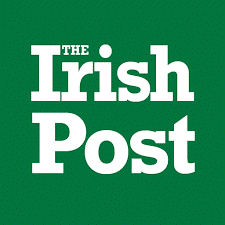
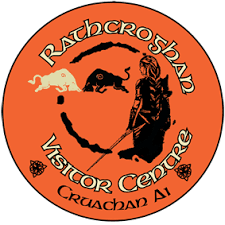
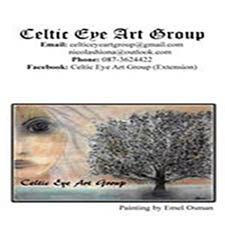
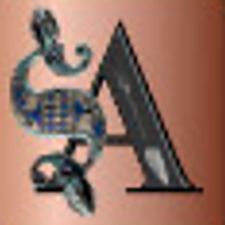
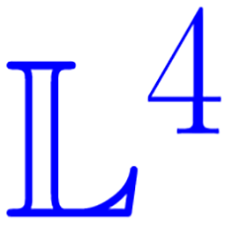



This sounds like a very exciting project to be involved in.
Wemon have always been overshadowed in history by men .
Thrilling and challenging… exactly the mix for women in Irish mythology. This is an invitation isomorphic with the project. Maith thu!
No comment, but a question. Has this competition closed? Ay chance the deadlie has been extended?
Sighle Meehan